
Barong Tagalog and Baro’t Saya
Phil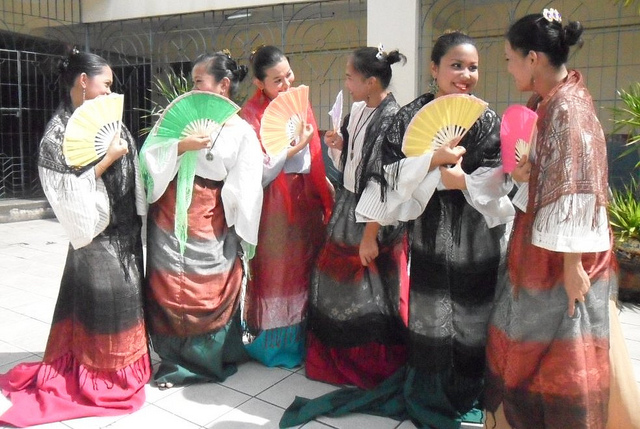 ippines is an archipelago of 7,107 islands with a total land area,
ippines is an archipelago of 7,107 islands with a total land area,
including inland bodies of water located in the western Pacific Ocean. This way this amazing country has a perplexing geography and its tropical climate make the Philippines prone to earthquakes and typhoons. Philippines is one of the most populated countries of the lovely planet having a population of more than more than 92 million.Philippines has many tribes of having the indigenous dark-skinned people and they form a minority of the population. They have the centuries old residing trend to live in various mountain villages with their original and traditional styles. So if somebody has to really determine about the traditional dress of Philippines, he’ll find it at the most remote areas of Philippines.
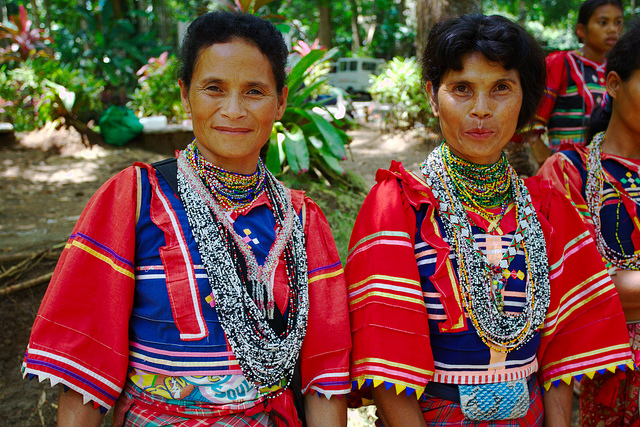
Two indigenous women of Philippines wearing their traditional Mindanaoan dresses.
Now, here the question arises why it is so? The modern culture of the Filipino people carries the influences of the Spaniards and the United States. This was due to the long dominating colonial period of the both of these ruling powers over Philippines and thus a mixed cultural society having the foreign ascendancies and the local magnetisms was developed in the country, However, a significant portion of the Filipinos still retain their indigenous and traditional culture.
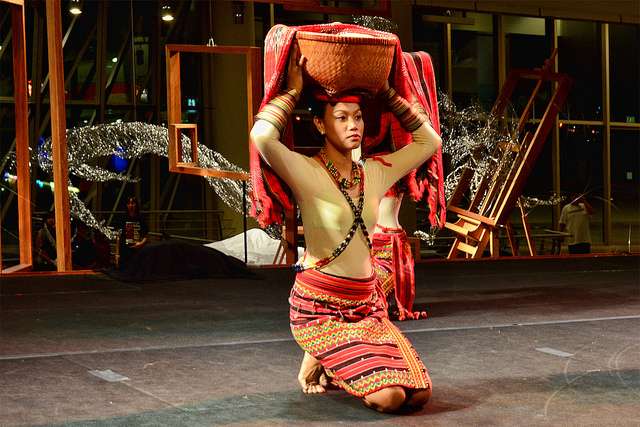
Ragragsakan, an all female festive dance from the mountainous Kalinga people
Many Filipinos who live today in many foreing countries, commonly adopted the westernized style of dressing. Similarly this trend is also followed by the Filipinos living in Philippines who have the Austronesian descent.
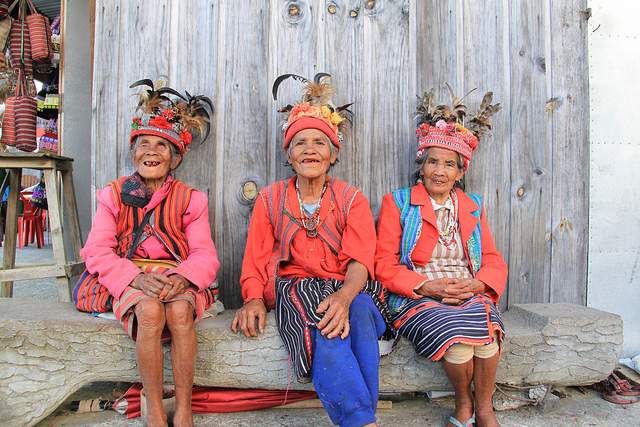
Some indigenous old ladies from Philippines in traditional costumes
The prominent ethnic groups of Philippines like Tagalog, Visayan, Bicolano and Moro have genuienly preserved a very traditional way of life and culture and even today they live with their folk heritage and traditional sport. In the traditional folk heritage of Philippines, the most spectacular feature is the traditional dress of Philippines.
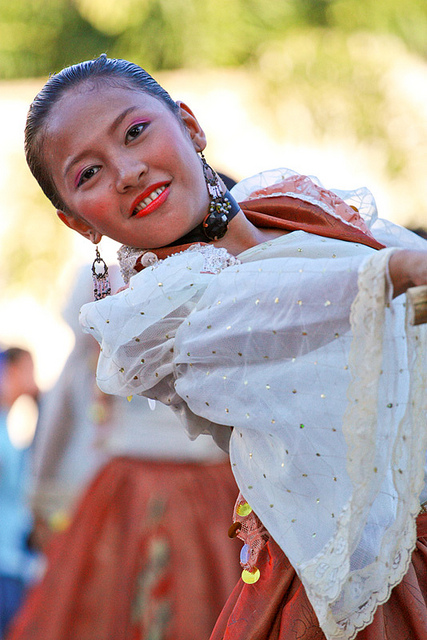
A Filipino girl in an awesome pose with traditional look
The barong Tagalog or simply barong is a traditional attire from Philippines which is actually an embroidered formal garment used by both the Filipino men and women. Barog Tagalog is a very lightweight garment which is highly feasible outfit for the humid and tropic climate of Philippines. Filipinos wear Barog Tagalog not only for the formal dressing but also it is the most common traditional wedding costume in Philippines.
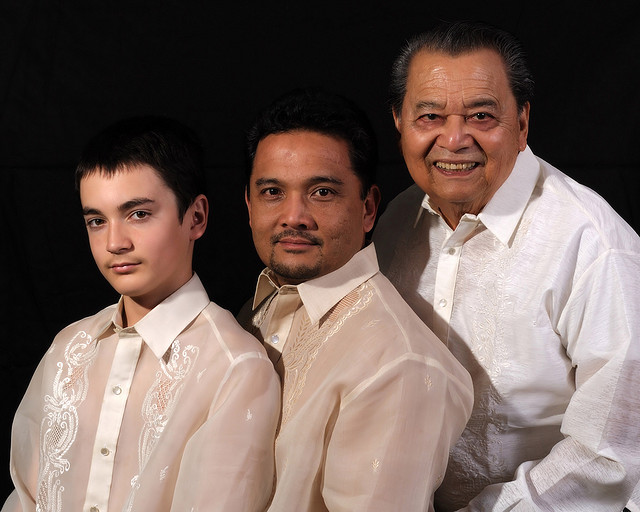
Modern Barong Tagalog – A lovely image representing three Filipino generations
Barong Tagalog is stitched in a variety of fabrics in Pina fabric which is hand-loomed from pineapple leaf fibers. Barong Tagalog is also prepared with Jusi fabric which is mechanically woven and was once made from banana silk. Banana fabric is another sheer fabric used in formal occasions. Made and hand woven from banana fiber, it usually comes with geometric design details.
The Filipino women love to wear Baro at saya, the baro is the top blouse and the saya is the skirt. Both of these Barong Tagalog & Baro at Saya are the unofficial national costume of Philippines. Barot at saya was evolved with the passage of time as originally both the native sexes used to dress up with half-naked outfits. Gradually, the Filipino females started to cover the upper torso with short and sleeved blouses and it was later on named as Baro. Similarly, during the colonization era of almost 400 years in Philippines, a long and wrap around skirt was developed which was called as Saya. Traditionally Baro and Saya were made from sheer fabrics and today Baro at say comprises of highly expressed and skillful embroidery. In the moderns times, Terno is another form of dress which has gained immense popularity among the Filipino women.
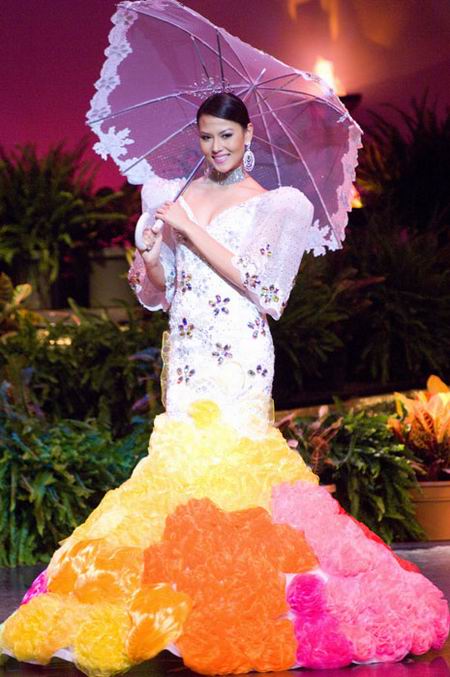
Terno – Another traditional attire for women in Philippines
The traditional dress of Pilippines like Barong Tagalog & Baro at Saya are real symbolic and allegorical in the cultrual heritage of Philippines. Not only in the day to day and formal usage, these traditional outfits are also worn by the folk perfmormers in their diverse cultural appearances.
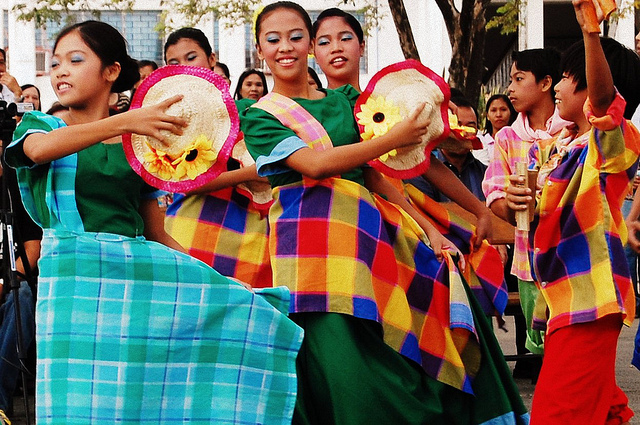
A group of the Philippine folk dancers in traditional attires
Source:
http://thelovelyplanet.net/traditional-dress-of-philippinesbarong-tagalog-baro-at-saya/